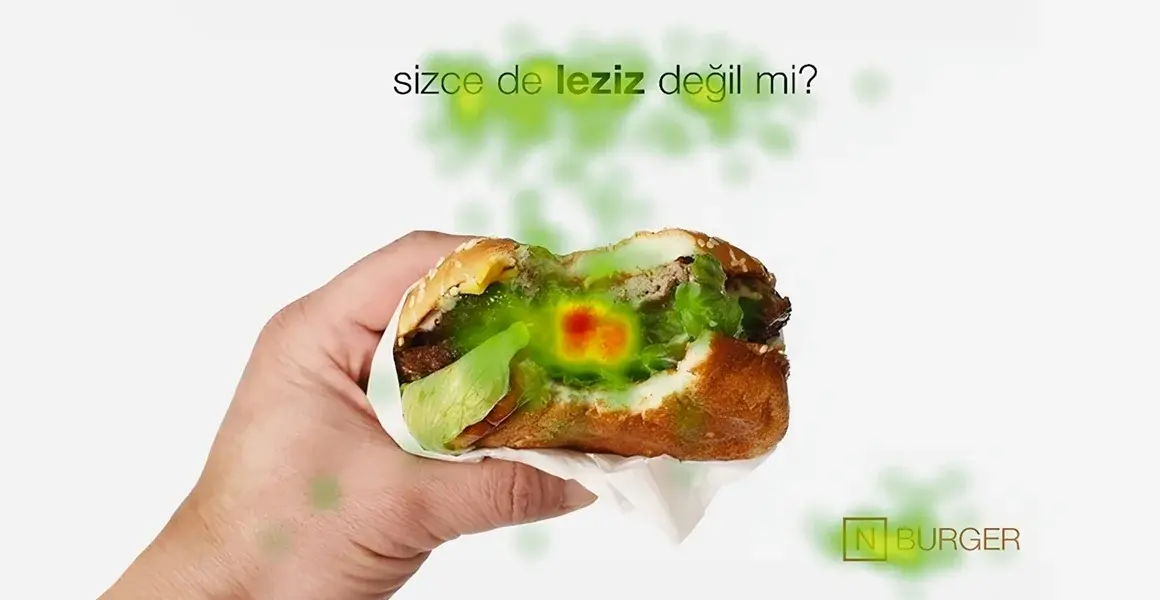Neuromarketing Examples
How can a product be placed in the image, and the message reaches the consumer correctly? What should be done to make the product or logo more visible? Thanks to neuromarketing methods that examine what the consumer sees on the poster, it is now possible to answer all these questions.

How is Neuromarketing Used?
Let's examine the subject with a finding that includes examples of neuromarketing.
Example 1: In an advertisement, should the hamburger be in the left hand or in the right hand?
As a result of the research we carried out in the laboratory with ThinkNeuro, we realized that keeping the hamburger in the right hand poses a problem for consumers. 90% of the right-handed target audience should not have problems in this regard under normal conditions.
Within the scope of in-depth research, we realized that; people are holding a hamburger with their left hand. He unwittingly dedicates his right hands to movements that require more dexterity, such as eating potatoes and drinking coke.
Such information will directly affect how effective the banner or advertisement will be. Because the harmony of the image with the mind is important in terms of the emotional bond we will establish with that image. Considering that most of what we call a brand is about the emotions of consumers, such information is very important. This is the kind of information we use in neuro design studies.

Example 2: Should the food be bitten or unbitten in the image?
Red: Intense focus area
Yellow: Medium focus area
Green: Low focus area
Can you find the difference between the two images? In the image on the left, since the hamburger has not been bitten, there is not much to be careful about. For this reason, the texts and logo attracted more attention of the subjects.
In the image on the right, the fact that there was a bite in the hamburger automatically shifted the eyes of the subjects to this area. Therefore, they paid less attention to logos and texts.
The bite on the hamburger enables the person looking at the image to empathize, thanks to the mirror neuron in the brain. Thus, the person feels an emotional effect as if he had bitten the hamburger himself. This is an important finding.
Although we cannot share the EEG results here, you can predict that the image on the right will trigger more consumer emotions due to the above reasons.



